What vitamin is in pomegranate - useful properties and cultivation
Pomegranate is a subtropical tree that has been cultivated by humans since ancient times. The fruits of the pomegranate tree are known for their valuable properties and are successfully used in the treatment of many diseases. The plant, which does not require large expenditures of labor and time, can be recommended to grow even for novice amateurs.
Content:
- Features of the structure of the pomegranate
- Beneficial features
- Contraindications for use
- Reproduction
- Care
Features of the structure of the pomegranate
Pomegranates belong to the Derbennikovye family and can grow in the form of a bush or tree. They are deciduous plants with glossy, oblong, shiny leaves arranged in pairs opposite each other. Pomegranates can be up to 6 meters high.
Flowering time is from May to August. The flowers are very beautiful: bright red or bright orange in the form of a water lily and bell... Round-shaped fruits are covered with red-beige or dark red peel. Under the skin are seedseach surrounded by juicy pulp.
The fruits themselves are quite large, from 5 to 12 cm in diameter and weighing up to 600 grams, in some varieties the fruits ripen up to 18 cm in diameter.
One pomegranate fruit contains more than 1000 seeds, which are located in 6-12 compartments, each in its own nest. The life span of a pomegranate is about 60 years, but by the fiftieth year, the yield decreases, and plantings are replaced with young trees. You can grow pomegranate in regions with warm winters and hot dry summers. In cold climates, pomegranates grow poorly and barely bear fruit, and frost and frost can destroy the tree.
Beneficial features
Pomegranate is the undisputed leader among fruits in terms of the content of useful components. The pomegranate fruit contains a large number of vitamins and minerals:
- Vitamins C, P, group B.
- Trace elements - potassium, phosphorus, iodine, calcium, magnesium, iron, sodium, manganese.
As part of pomegranate juice:
- The sweetest sugar is fructose.
- The simplest, easily digestible sugar is glucose.
- Acids - succinic, citric, malic, oxalic, tartaric, boric, pantothenic.
- Tannins.
- Phytoncides.
- Tannin.
- Nitrogenous substances.
- Chloride salts.
- Sulfuric acid salts.
The potassium content of pomegranate juice is much higher than that of other fruit juices. Thanks to this, the juice can be used in the diet of hypertensive patients (with regular use, blood pressure decreases), it strengthens the heart muscle, regulates the body's water-salt metabolism.
Pomegranate juice is a source of 15 amino acids, some of which are found only in meat.
Therefore, it is simply necessary to use it in the diet of vegetarians. Getting into the bloodstream, amino acids promote the synthesis of proteins, destroy abnormal cells.
The inclusion of pomegranate juice in the diet is recommended for people who have undergone radiation or work with radioactive substances. Possessing a diuretic and choleretic effect, pomegranate juice is useful for people suffering from liver and kidney diseases. Pomegranate juice is very useful for patients with diabetes mellitus: already on the 4th day of moderate consumption of the juice, the blood sugar level is significantly reduced. Pomegranate peel contains alkaloids that have a powerful antihelminthic effect.Oil is obtained from pomegranate seeds, which protects against cancer and has a rejuvenating effect on the body.
Pomegranate oil has found its application in cosmetology. Due to the large amount of nutrients, including vitamin E, pomegranate oil slows down the aging of the facial skin, eliminates wrinkles and serves as an excellent protection from the sun's rays. The pomegranate tree has found applications even in the textile industry. Pomegranate flowers contain many dyes used to dye fabrics.
Contraindications for use
Despite the huge number of useful properties, there are contraindications when using pomegranate:
- Firstly, pomegranate is not recommended for people with sensitive tooth enamel. The high acid content of pomegranate fruit contributes to the destruction of tooth enamel and staining of dentin. For protection, you can use toothpaste for sensitive teeth before eating pomegranate, or chew a piece of cheese. Tooth enamel is covered with a kind of acid-impermeable film.
- Secondly, pomegranate and its juice are contraindicated for people with gastric ulcer, gastritis with an increased level of acidity of gastric juice.
- Thirdly, during pregnancy it is also not recommended to consume pomegranate and pomegranate juice.
- Fourth, pomegranate peel and bark contain toxic substances, so it is important to take precautions when using pomegranate bark decoctions. In case of an overdose (poisoning), deterioration of health, weakness, convulsions, dizziness, increased blood pressure may occur. If such signs appear, you should seek medical attention.
- Fifth, pomegranate juice is not recommended for use in the nutrition of babies under the age of one year.
Reproduction
For cultivation at home, a dwarf variety of Pomegranate is suitable. In height, it grows no more than a meter, rather unpretentious (the main thing is that there is enough heat), so it can be safely grown in pots at home.
For planting, you can purchase seeds of dwarf varieties in a specialized store, or you can get them from pomegranates bought in vegetable departments. It is important to remember that when self-extracting seed, the plant will not retain the qualities of the parent variety. And dwarf varieties, due to their small size, will feel more comfortable in small pots.
The dwarf pomegranate produces few fruits, but they are all large and juicy.
Pomegranates are propagated mainly in two ways:
- Cuttings
- Seeds
Seed planting stages:
- Prepare the soil: make a loose mixture of peat, fertile soil and sand.
- Dry the seedsif you got them yourself.
- Deepen the seeds into the soil 1 cm.
- Drizzle.
- Cover the container with the seeds with plastic wrap.
- Place on a windowsill on a sunny side.
Moisten the soil regularly. Pomegranate seeds germinate within two weeks. Remove the film as the seedlings grow and get stronger. Select the strongest from the emerged plants for growing. In two months, the trees will be transplant in separate containers (shallow and wide).
Reproduction stages by cuttings:
- Separate the shoot from the current year's increment.
- Hold on cuttings six hours in a solution of a root growth stimulator (root, zircon).
- Rinse under running water.
- Pour a 3 cm layer of coarse sand on fertile soil.
- Place the cutting 2-3 cm in the ground.
- Put a glass jar on top of the handle.
- Water regularly.
- After a month, remove the jar and sand and fill up the fertile soil.
Care
Pomegranates can easily tolerate an arid hot climate; frosts can cause the death of the plant. The tree should be in the sun most of the day. It is better to prepare the soil sandy, well-drained. It is important to ensure that there is no stagnation of water.
Watering and feeding pomegranates:
- In hot weather, water the pomegranate sparingly after the soil has dried 2 cm, about once a week.
- In the fall and winter, reduce watering to twice a month.
- During the growing season (spring and summer), feed the tree with a complex mineral fertilizer one every two to three weeks.
In winter, it is necessary to place the pomegranate in a bright room with an air temperature of 14-15 degrees. The tree may shed all or part of its leaves.
In the first five years of life, the pomegranate tree is transplanted every spring, in subsequent years - once every three years. When transplant keep the pomegranate in a large container with an earthen lump. You can take the soil for planting the usual for flowers, which is sold in stores, and add a third of the sand to it.
The pomegranate tree responds well to pruning and pinching, so you can easily shape your tree. Remove weak shoots, they do not form flowers.
Pruning is carried out twice a year - in spring and autumn, and in the fall it is recommended to cut the shoots more "thoroughly".
With good care at home, the pomegranate tree blooms in the third to fifth years of life, dwarf pomegranates bloom in the second year. When the flowers appear, pollinate with a cotton swab (it is better if you take the pollen from another plant). If this operation is successful, you can get ripe fruits in the fall.
More information can be found in the video.



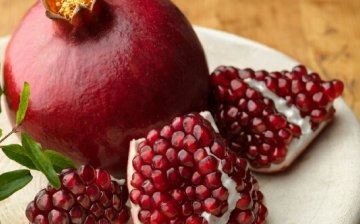

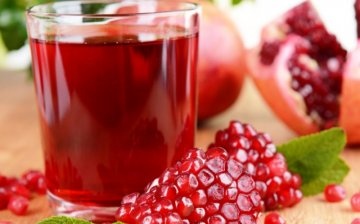
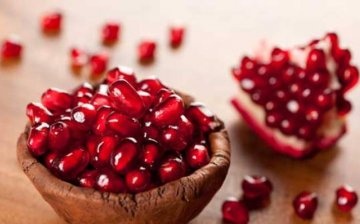
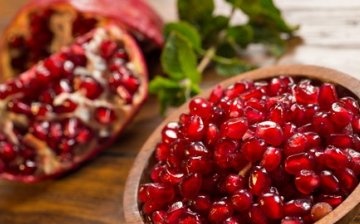
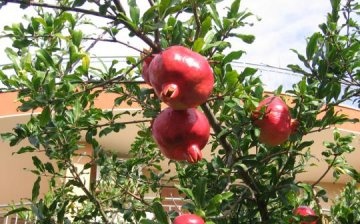






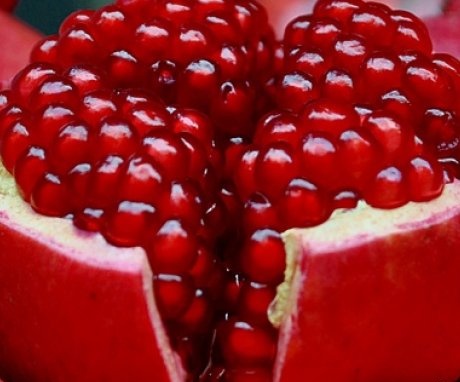
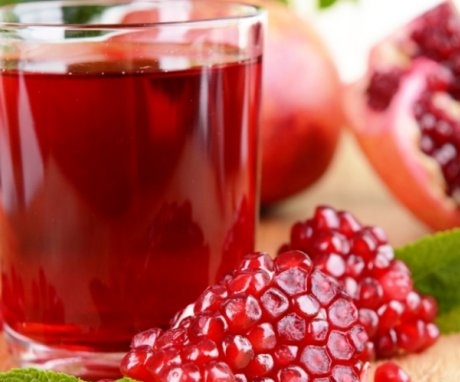
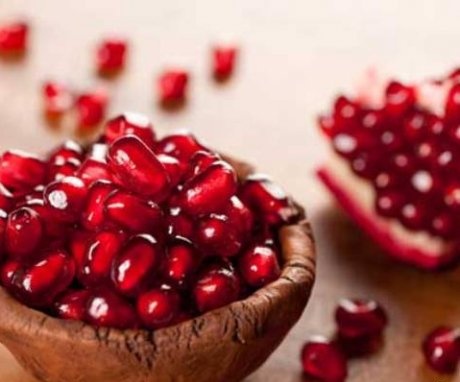
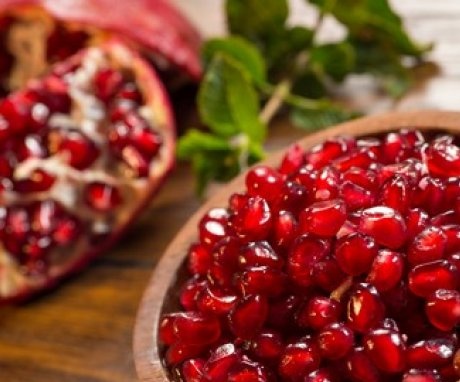
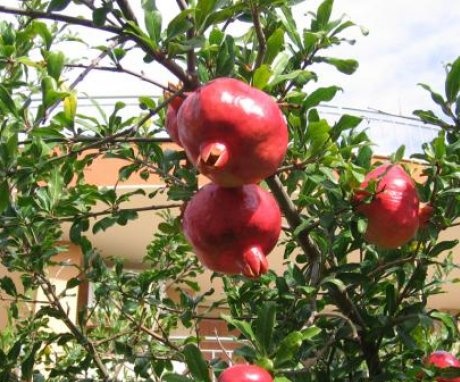
Many people are very fond of pomegranate, and only here comes the season of the pomegranate, they eat it with joy. And I am somehow neutral towards him. I can't say that I love it very much, although they say that it is very useful.
I love pomegranate, it is a pity that it does not ripen in our climate. I often buy an imported one. I learned how to clean properly and eat with pleasure with the whole family. We even make a salad with pomegranate and meat, very tasty.